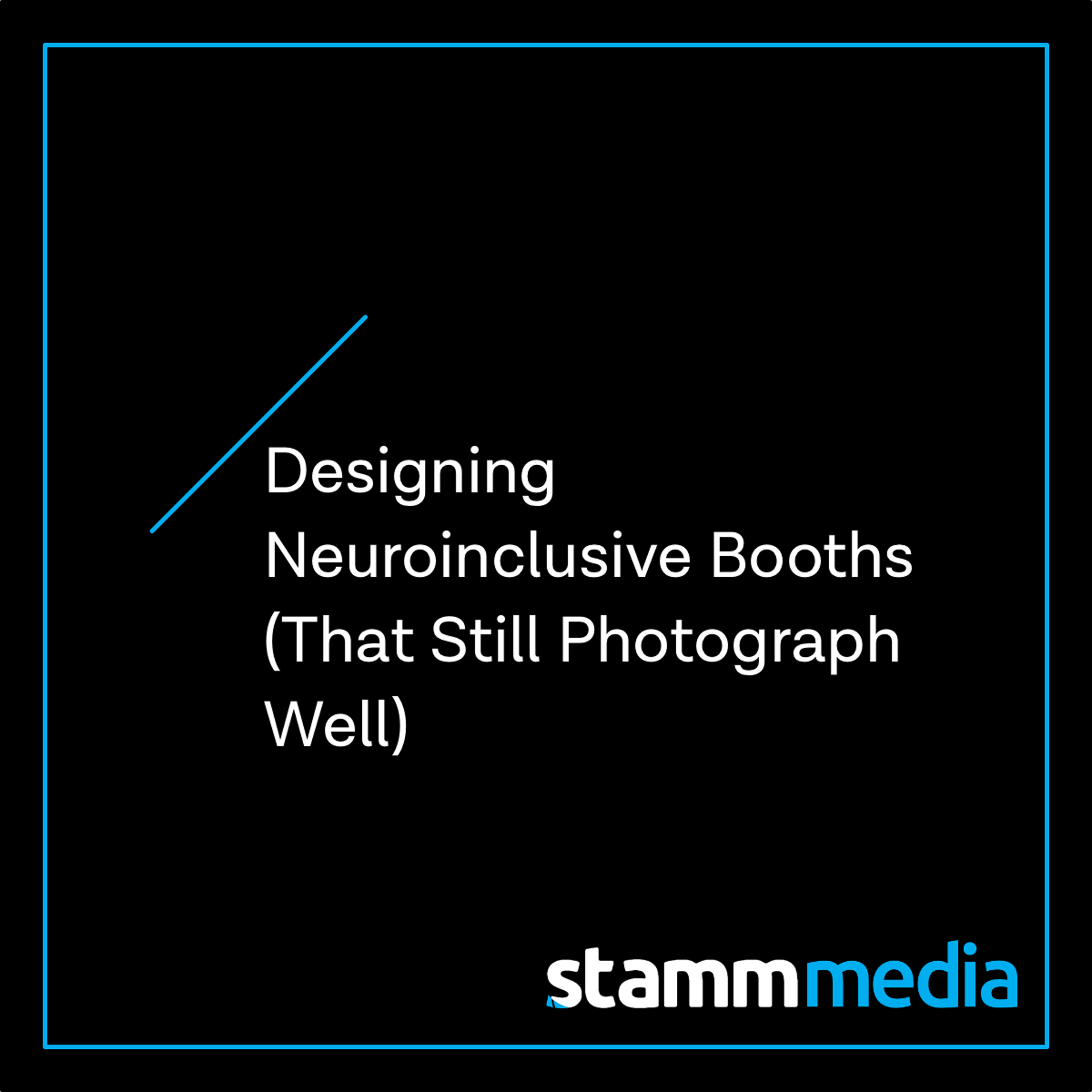TL;DR:
Neuroinclusive design makes your booth calmer, clearer, and easier to navigate without killing the vibe. Think glare control, audio zoning, predictable content pacing, legible type/captions, and a tiny “quiet nook.” You’ll see longer dwell times, better conversations, and cleaner photo/video moments.
What You’re Looking At
A neuroinclusive booth is built for different sensory needs from the jump. We tune LED, lighting, and audio so the space feels intentional, not loud by default. Content loops avoid rapid flash or chaotic motion; typography and captions are sized for real viewing distances (not just the design deck). Wayfinding is obvious: where do I stand, how long will this take, what happens next?
In practice: fewer people bounce, more people finish demos, and your crew can actually talk without shouting.
When paired with…
- Fine-pitch LED (P1.2–P0.9): lets us run lower brightness with crisp text and smooth gradients.
- Beam-aimed key lights + soft fills: flattering on-camera, low glare in-person.
- Directional audio / small arrays: intelligible speech where you need it; quiet elsewhere.
- Captioning & assistive tech: live captions on screens, QR to transcript/alt formats.
Why It Matters
Trade shows overload the senses. When you reduce friction (light, sound, motion) you increase comprehension and time-in-booth. Neuroinclusive means more visitors who can process your story, including folks with ADHD, autism, concussion recovery, migraine sensitivity, or just long-day fatigue. It’s also brand-safe: calmer spaces look premium on camera.
Use Cases
1) Demo Pods that Convert
- Type & contrast: body copy ≥ 28-32 pt at 8-10 ft; high-contrast text (≈4.5:1) without pure-white on pure-black for thin strokes.
- Pacing: 10-15 s motion beats; avoid abrupt full-frame cuts and rapid flashing (>3/sec).
- Controls: a simple “Pause / Replay” button or let staff pause from a Stream Deck.
2) Executive Mini-Theater (6-12 seats)
- Brightness: run LED at 30-50% with a soft black floor; pre-check dark gradients for banding.
- Audio: target ~60-65 dBA in seats; directional speakers; lav and small array for Q&A.
- Expectation-setting: “This session is 8 minutes” on signage. Predictability lowers stress.
3) On-Booth Studio / Press Corner
- Camera-friendly: high-refresh LED, no micro-strobe content; steady motion graphics.
- Lighting: key at eye level with soft fill; reduce specular hits on glossy scenic.
- Captions: turn them on, even for socials; add a QR to full transcript.
4) Quiet Micro-Nook (3×5 ft)
- Build a breather: one small bench behind a half wall, indirect light, no speaker aimed at it.
- Signpost it: “Quiet moment? This way.” It pays back in longer, better conversations.
Field Guide (steal this checklist)
LED & Content
- Cap brightness to what the scene needs, not max nits.
- Avoid full-screen white flashes and rapid flicker.
- Use 10-bit exports for smooth gradients, test at show brightness.
- Minimum type sizes by distance; keep labels readable in photos.
Lighting
- Aim beams to avoid glance-angle glare on LED and glossy surfaces.
- Prefer soft sources (diffused panels) over hard point sources near eye level.
Audio
- Carve zones: demo area intelligible, aisle edges quieter.
- Keep music underscoring subtle; favor voice clarity over loudness.
- Provide one headset or tabletop speaker for focused listening.
Wayfinding & Choice
- Mark clear paths and dwell points; don’t make people stand in traffic.
- Offer choice of engagement: quick 60-second loop, 5-minute deep dive, or “ask an expert.”
- Post duration estimates; add a simple “start here” marker.
Comms & Accessibility
- Turn on live captions where possible; provide QR to transcripts/specs.
- Avoid scented elements; keep flashing lights out of peripheral sightlines.
- Train staff on “pace & invite”: offer a seat, summarize what happens next, and let visitors opt out gracefully.
Want to see this in action?
